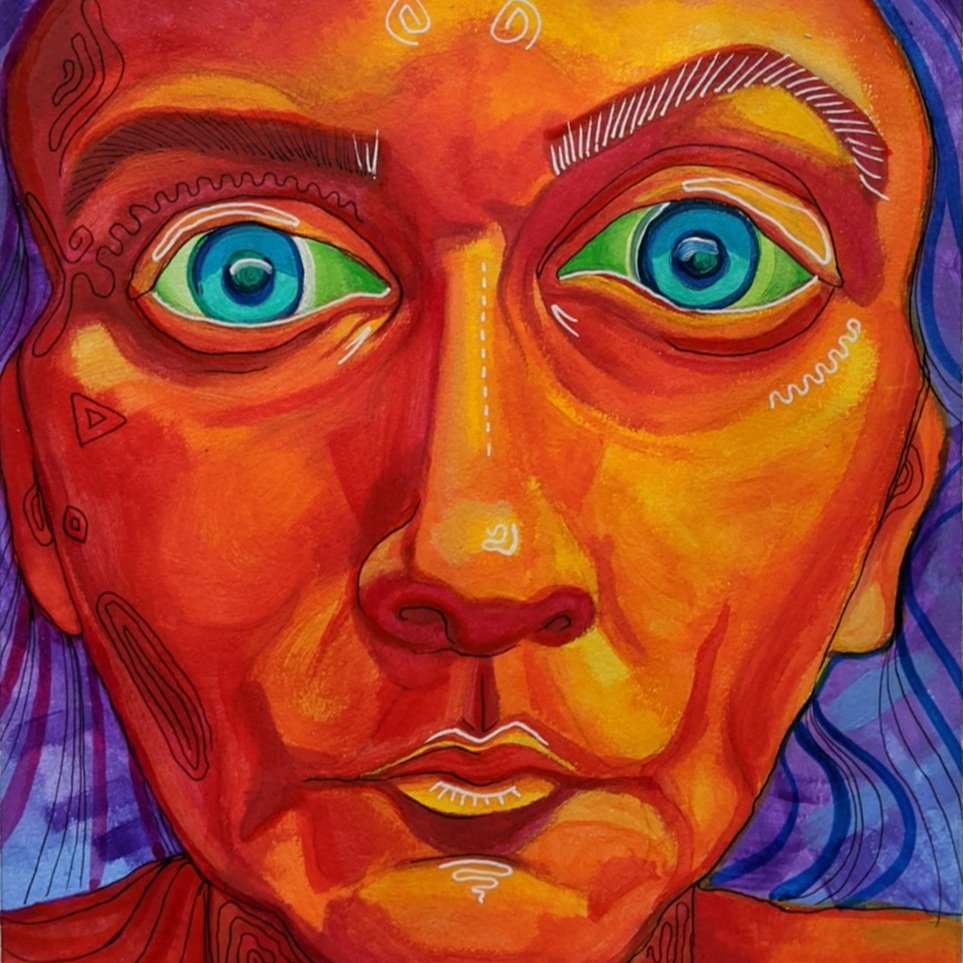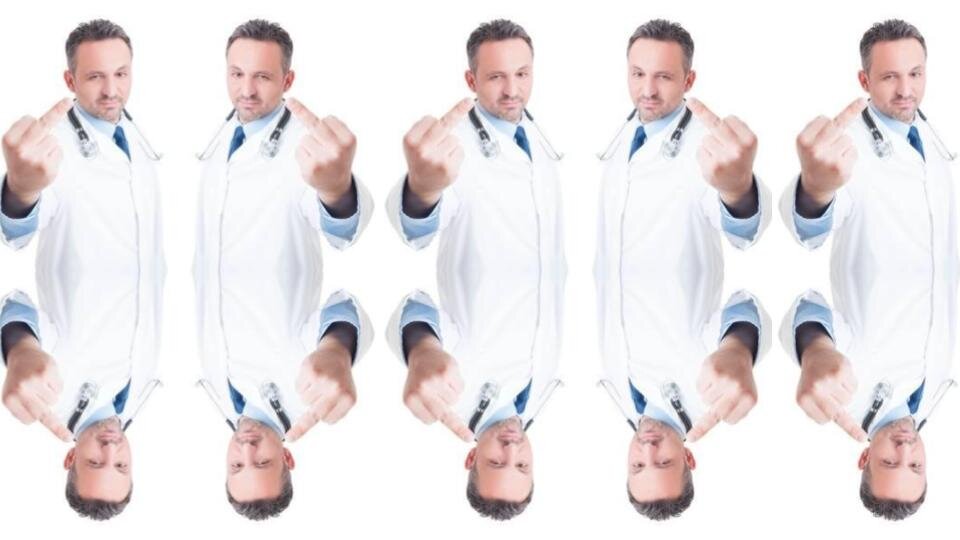This is my pecha kucha presentation on head transplants. Some images are of surgical procedures, so if you would like to leave the page, please do so.
These are some films from the 60’s and 70’s about head transplants. They are mostly horror films. We have always associated bodiless heads and headless bodies with Halloween, spooky stories, and death. But what if we didn’t have to?
Before any of the horror films there was Vladimir Demikhov, Soviet scientist and organ transplantation pioneer. His successful heart and lung transplants done on animals made him famous.Then World War I happened and he was on the front line as a forensic expert and pathologist.
After the war, Demikhov spent the 1950s experimenting on dogs. This is one of his two-headed dogs. He used the heart of the bottom dog to run blood through the top dog.
He won lots of awards, but mostly people were appalled by Vladimir’s work. His dogs lived various life times from a few hours to a few months, but he admits that none of them really acted quite like a normal dog.
Dr. Robert White was an American surgeon who pioneered widespread methods of draining fluids and chilling injured parts of the brain for surgery. He learned partly by experimenting on animals. He led the first transplants of brains from one dog to another and also one monkey to another.
He applied these methods to Vladimir’s dog-model, and successfully performed is own version of the head transplants. This is a real taxidermied patient of his.
Then he moved on to monkeys. He completed the head transplants, but also became a leading target for protestors. One interrupted a banquet in his honor by offering him a bloody replica of a human head. Others called his house asking for "Dr. Butcher."
After these procedures in the late 70’s, nobody really touched head transplants for a while. Robert White was the last morally-questionable neurological surgeon standing for a couple years.
Italian Doctor Sergio Canavero worked for 22 years as a neurosurgeon at the University Hospital Turin, but separated from the institution in 2015 due to increased opposition to his work. Canavero started to work on head transplantation in 1982. Or to quote him,” Head transplantation, body transplantation, whatever, Technicality!”
This is Valery Spiridonov. He is 33 years old, is a computer programmer from Russia, and has Werdnig-Hoffmann disease. The spinal and muscular dystrophy will likely kill him even though his mind is totally normal and fine.
In 2015, Spiridonov won the selection to be the first living-human-head transplant’s patient.
In 2013 Canavero published a protocol that he said would make human head transplantation possible. The project is called “HEAVEN” and stands for something scientific. Doctor Ren, from China, has done over 1,000 head transplants on mice and rats. Both the US and Europe have banned Canavero’s practices, but China is happy to host.
Now Doctors Ren and Canavero are best friends. In 2016 they published a review of attempted as well as possible neuroprotection strategies that they said should be researched for potential use in a head transplantation procedure. Or, in Canavero’s words, “the first human head transplant is imminent.”
The procedure’s greatest hurdle is reconnecting the donor’s and recipient’s spinal cords. One surgical team will remove the donor head, then both bodies will be cooled to 54 degrees. Mammals can be sustained without bloodflow for up to an hour at this temperature, so the entire surgery must be completed within an hour.
Medical professionals around the world are speaking outrage at this procedure. The President Elect of American Association for Neurological Surgeons said, “I would not wish this on anyone, nor would I allow anyone to do it to me as there are a lot of things worse than death."
Consciousness is affected by our body’s chemical composition. Our moods change and our hormones react to their environment. A head transplant is not just screwing a lightbulb into a new lamp, it’s screwing a lightbulb into a strange socket that looks like it might fit but you have no idea what it does.
New connections, foreign chemicals, and a never-done-before procedure even if done perfectly could very likely result in a never experienced level and quality of insanity". Or it could be fine. Or he could just die. Nobody knows.
This could be an entirely new person, or type of person. Science has not yet nailed down what exactly “the soul” is, but this controversial surgery feels wrong to a lot of people.
The surgery was originally announced to happen in December 2017, and since that is clearly not still an option, it’s actual date remains an enigma. Until then, we will be waiting on the edge of our… shirt collars.





















